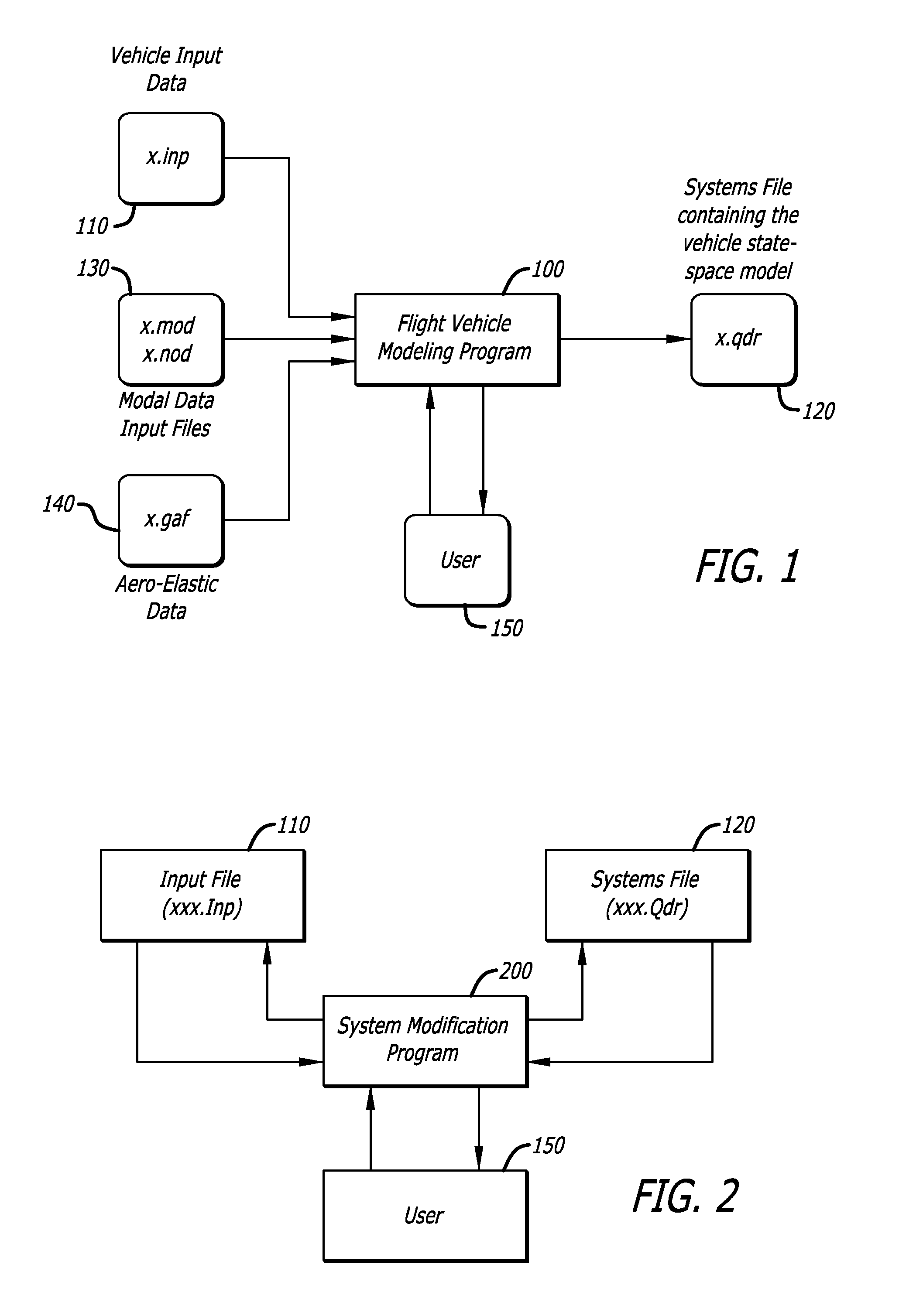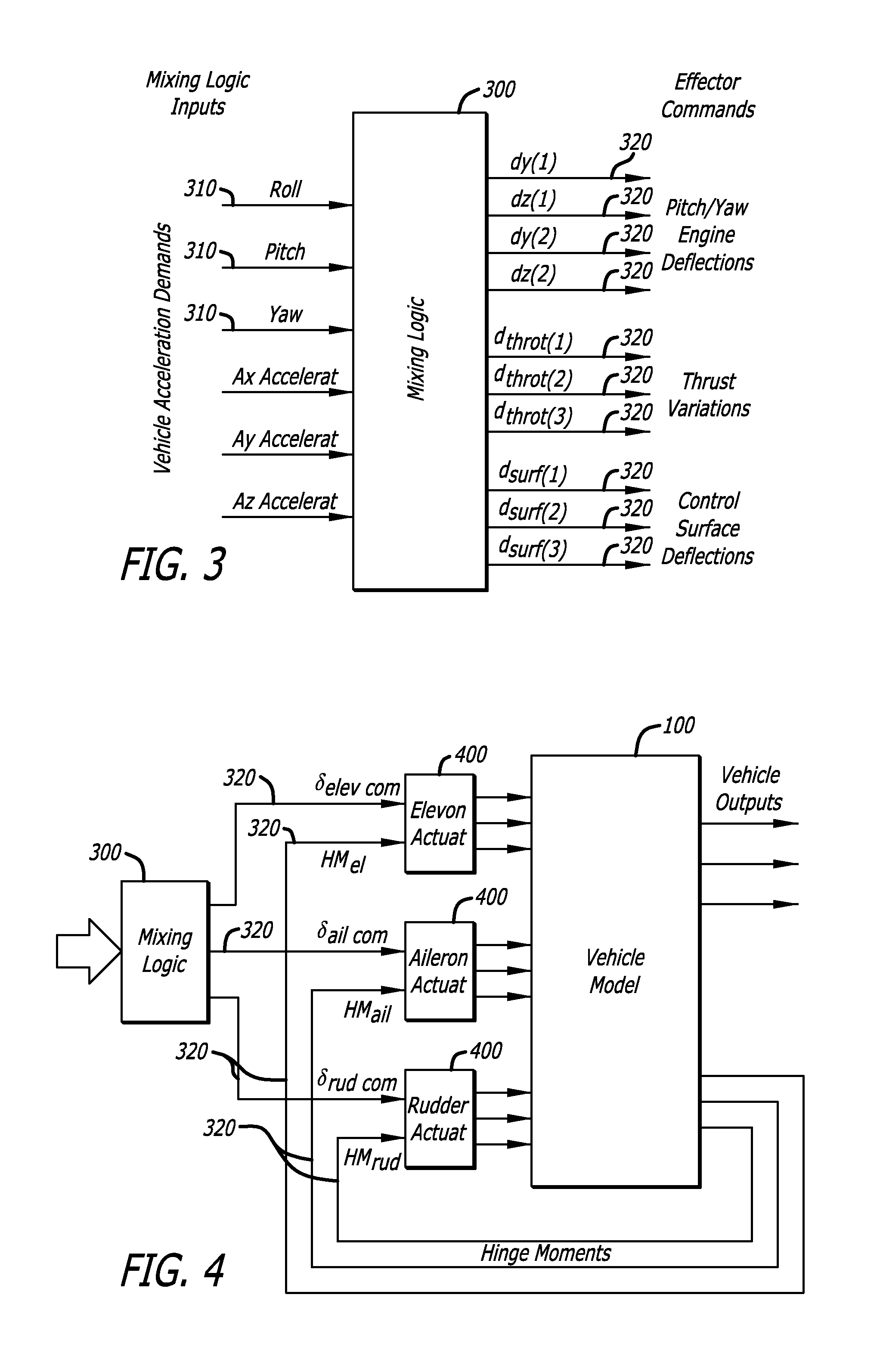Method of modeling dynamic characteristics of a flight vehicle
a flight vehicle and dynamic characteristics technology, applied in the field of flight vehicle dynamic characteristics modeling, can solve the problems of time-consuming, complicated and existing methods for modeling high-order flight vehicle dynamics, and achieve the effects of improving the complexity of flight vehicle models, convenient modification, and satisfactory complexity level
- Summary
- Abstract
- Description
- Claims
- Application Information
AI Technical Summary
Benefits of technology
Problems solved by technology
Method used
Image
Examples
Embodiment Construction
[0032]In the following description of the present invention reference is made to the accompanying drawings which form a part thereof, and in which is shown, by way of illustration, exemplary embodiments illustrating the principles of the present invention and how it may be practiced. It is to be understood that other embodiments may be utilized to practice the present invention and structural and functional changes may be made thereto without departing from the scope of the present invention.
Introduction
[0033]The present invention is a collection of flight vehicle modeling and analysis programs and other related utilities, used to create complex state-space models of flight vehicles for linear stability and performance analysis. The dynamic models may vary, from simple rigid body to very complex models that may include high order dynamics, such as actuators, tail-wag-dog, slosh and flexibility with hundreds of structural modes. The program is interactive and uses a graphical user in...
PUM
 Login to View More
Login to View More Abstract
Description
Claims
Application Information
 Login to View More
Login to View More - R&D
- Intellectual Property
- Life Sciences
- Materials
- Tech Scout
- Unparalleled Data Quality
- Higher Quality Content
- 60% Fewer Hallucinations
Browse by: Latest US Patents, China's latest patents, Technical Efficacy Thesaurus, Application Domain, Technology Topic, Popular Technical Reports.
© 2025 PatSnap. All rights reserved.Legal|Privacy policy|Modern Slavery Act Transparency Statement|Sitemap|About US| Contact US: help@patsnap.com



